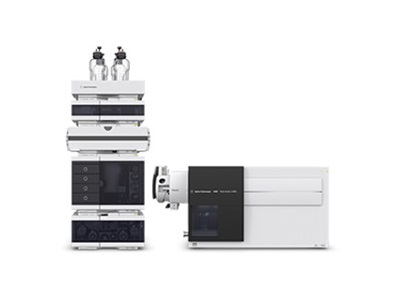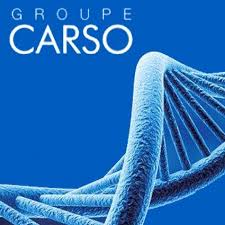|
Introduction
Fighting micropollutants in water is a priority for the government, a bulletin published in 2016 mentions the list of pesticides concerned and their respective maximum rate. The rate can be different according to the matrices where we find the pesticides. In fact, we can distinguish water getting in and out of water treatment plant. However, the problem is that some molecules are difficult to measure due to their size, their polarity, their capacity to be absorbed on sediments, or their non-volatility. Carso is a company specialized in the delivery service for analysis. I worked in the RSDE team that develops new assays protocols to overcome the problems facing micropollutants analysis in water. My role was to optimize and use a method to analyse glyphosate and its metabolite; aminomethylphosphonic acid (AMPA) in water.
Experimental conditions
Water samples from the treatment plant contain multiple compounds, we need to separate our analyte from the rest to analyse them, for this we use chromatographic methods. In our case since the glyphosate and AMPA are non-volatile compounds we ought to use liquid chromatography (LC) instead of gas chromatography (GC) normally used to preform the separation. We used double mass spectrometry (MS/MS) in Multiple Reaction Monitoring mode (MRM) to detect specifically our analytes. We faced another problem in LC separation in the high polarity of glyphosate and AMPA, this can be avoided by using derivatization in reverse phase liquid chromatography (RPLC). For this, we used a protocol of derivatization developed by Carso® by adding an excess of 9-fluorenylmethylechloroformiate (FMOC) in acid conditions to the water. The addition of FMOC allows to increase the mass, the retention time and decreases the polarity.
We used an LC-MS/MS from Agilent® (figure 1), with a reverse phase column Infinitylab Poroshell 120 EC-C18, Agilent® with gradient of water/ammonium acetate/acetonitrile mobile phase that permits the elution of very polar compounds. The mass spectrometry is one of the most resolute and specific detection method. This equipment used in this protocol is a triple quadrupole, with Electrospray source (ESI). This technique requires the use of an internal standard to eliminate experimental conditions biases, we used for this glyphosate and AMPA labelled with stable heavy isotopes. To be sure that the mass spectrometry detects the right molecule, we use several transitions (quantification and qualification) with the 3 quadrupoles. Thus, it allows us to isolate and measure the two pesticides, further details of the method are confidential.
For the application of this method in daily routine, we inject samples between 2 quality control (QC) to verify the no derivation of the system. The peaks are integrated, the results are treated and returned to the client.
Results
Our method showed high performance results, the accuracy of quality controls was higher than 90 %. However, the Carso® politic of confidentiality regarding results of clients do not allow me to publish them in this article.
Conclusion
We developed a method to analyse glyphosat and AMPA which are difficult molecules to measure. That’s why this analysis had to be done by the RSDE team that adapted the measurement protocol to water samples with utmost precision. This protocol developed by Carso® required many tests and assays, at the end the results were accurate and satisfied the government bulletin and the client’s requirement.
|
|

Fig 1 : Photography of the HPLC Agilent 1290 Infinity II connected to Agilent 6470 Triple Quad LC/MS
|



